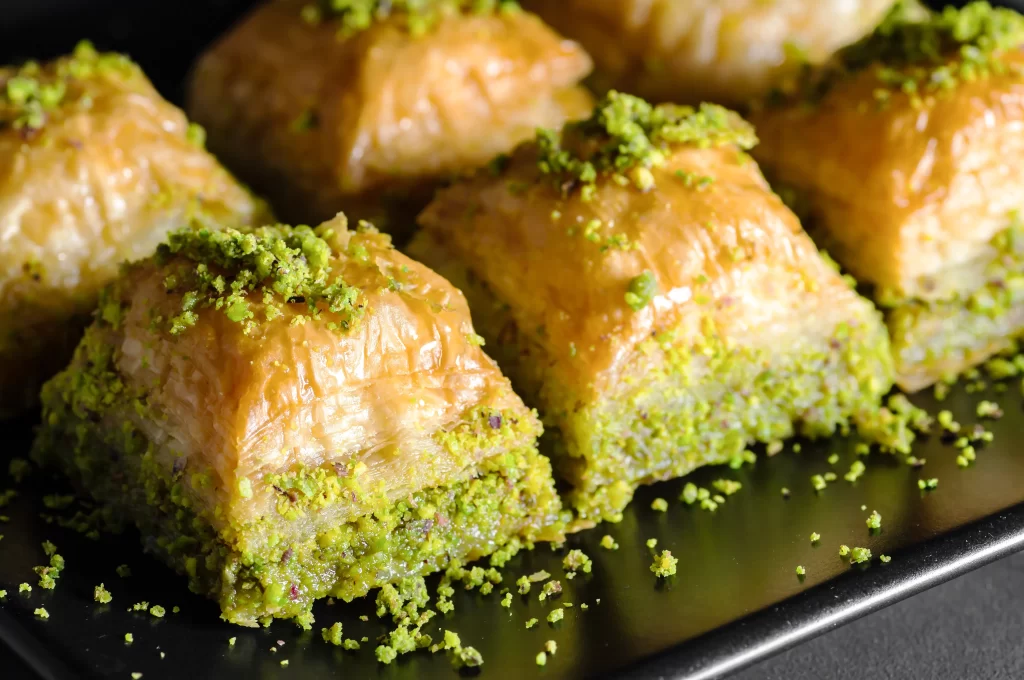Baklava, a confection that delights the senses with its intricate layers of crisp phyllo dough and rich nut fillings, is not just a work of culinary art but also a showcase of scientific principles. This article delves into the science behind the creation of baklava, unraveling the chemistry, physics, and culinary techniques that make this dessert a true masterpiece.
The Phyllo Phenomenon: At the heart of baklava’s appeal lies the unique texture and flakiness of its phyllo dough layers. The science behind this phenomenon is a delicate balance of moisture, gluten formation, and fat content. Understanding how the gluten network forms within the dough and how the layers of fat (often clarified butter) interact with it is essential in achieving the sought-after flaky texture.
Creating the Crisp: The crispness of baklava exterior is the result of precise moisture control during baking. As the dessert cooks, the moisture within the dough and the butter evaporate, leading to the development of a crispy outer layer. Maintaining the ideal moisture content and oven temperature is crucial to achieving the signature crunch that contrasts with the tender layers within.
Nutty Nuances: The nuts within baklava not only contribute to its taste but also affect its overall structure. The oils present in nuts have a significant impact on moisture content, and understanding this chemistry helps maintain the dessert’s desired texture. Furthermore, the distribution of nuts influences the layers’ stability, allowing for a sturdy yet delicate structure.
Syrup Science: The syrup that soaks into baklava, infusing it with sweetness and moisture, is another fascinating scientific aspect. The syrup-to-dough ratio and the syrup’s temperature play vital roles in how effectively it permeates the layers without rendering the dessert soggy. This balance is essential in achieving a harmonious blend of flavors and textures.
Thermodynamics of Taste: The enjoyment of baklava is enhanced by the principles of thermodynamics. The varying temperatures of its components, from the warm syrup to the crisp outer layers and the nut-filled interior, create a sensory experience that engages both the taste buds and tactile sensations. This interplay of temperatures amplifies the dessert’s indulgence.
Innovation and Experimentation: While rooted in tradition, baklava is not impervious to innovation. Culinary scientists and chefs experiment with different fats, nuts, and even techniques like freezing the dough to create novel textures and flavors. This continuous exploration of the dessert’s scientific aspects keeps the culinary world abuzz with new possibilities.
Conclusion: Baklava’s allure extends beyond its visual and gustatory pleasures; it is a testament to the intersection of culinary art and science. By understanding the chemical reactions, physical transformations, and meticulous techniques that go into its creation, we can appreciate the dessert not only as a delectable treat but also as a manifestation of the scientific principles that shape our culinary experiences.

